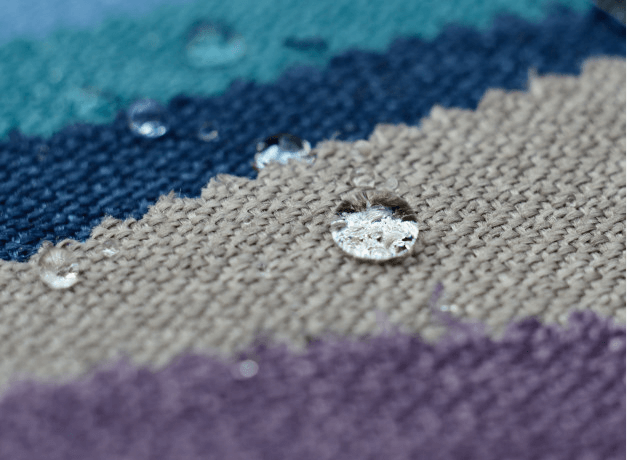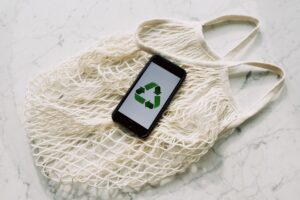Textile sustainability is a subject of concern that is increasingly gaining traction globally. However, with the production and consumption of textiles reaching new heights, studies show that the current low rates of reuse and recycling result in more textiles being discarded than ever before.
Several organizations, including the United Nations, have called for increased focus on the environmental, social, and community impacts of unsustainable textile production. As a result of numerous global awareness initiatives, consumers are increasingly starting to consider the sustainability of the clothes that they purchase. But, the apparent bottleneck to these initiatives has been the emergence of “performance fabrics”.
Performance fabrics are generally considered easier to maintain than “sustainable fabrics”. But some questions need to be answered to render this generalisation valid: What are sustainable fabrics? What are performance fabrics? Are sustainable fabrics less performant? And what should consumers pay attention to when seeking fabrics that are sustainable?


Here are some keys to having a more structured judgement on this subject.
What constitutes a sustainable textile?
Sustainable textiles are textile materials derived through eco-friendly means and resources. To determine what constitutes a sustainable textile, one needs to look at it through the four general stages of the product’s life cycle: raw material extraction, textile production, added chemistry and end-of-life.
Raw material extraction stage
In this stage, we assess the effect on the land and water used for growing natural fibres such as cotton and wool, as well as the impact of obtaining fossil fuels for synthetic fibres such as polyester and nylon.
For example, while natural fibres are generally sustainable, there are still environmental concerns to consider in their production. Cotton production, for example, requires a lot of water and pesticides to thrive. This combination is harmful to both marine and soil ecosystems. Moreover, synthetic fibres are made from petrochemicals, whose production accounts for a major quota of the global total amount of carbon dioxide emissions.
All these elements are factors that determine a textile’s sustainability at its raw material extraction stage.
Textile production stage
At the production stage, we assess textile sustainability based on water and energy usage during manufacturing, the effects of production waste, and a company’s social responsibility to its workers at its production facilities.
As part of a commitment to the Sustainable Development Goals (SDGs), textile production companies should ensure optimal use of water and energy during production and proper disposal/recycling of production wastes. Furthermore, they should also ensure safe and humane conditions of work and sufficient pay for their textile workers. Textiles made from natural fibre but manufactured by companies whose textile workers are treated like slave labourers inadvertently have their qualification as sustainable textiles tarnished.
Added chemistry stage
The use of additional chemicals in textiles can have negative effects on the health of both textile workers and consumers.
For instance, according to a study done by the European Parliament, textile dyeing and finishing are major elements that are responsible for about 20% of global clean water pollution.
End-of-life stage
Lastly, the end-of-life stage involves the textile’s biodegradability and the reclamation infrastructure required to convert the textile, once used, into new raw material. These elements at this stage determine the textile’s sustainability.
How do we define “performance” fabrics
“Performance fabric” refers to specialty fabrics that are designed to withstand wear and tear and are easy to clean. Manufacturers mostly use them for indoor and outdoor furniture, carpets and upholstery, as well as draperies and clothing. The central idea behind performance fabrics is durability. This refers to the extent to which the fabric is resistant to deterioration. And this ties in with the issue of maintenance, specifically the ease of cleaning stains from the fabric.

Performance fabrics withstand tough conditions such as prolonged exposure to sunlight and saltwater. Their fibre composition, UV protection, and advanced finishing technologies are tested and proven to deliver exceptional durability and superior performance. The fabric’s fibres have been engineered to have high resistance to colour fading and loss of strength.
Use of additives to create “performance” fabrics
Additives are materials when added to a fibre, change its properties and improve its performance. Manufacturers create “high-performance” fabrics by incorporating these additives into the yarn during production. They also make performance fabrics by applying finishes or coatings to the material after production.
Examples of performance fabrics and the additive used include;
- Easy care fabrics, which have stain-resistant finishes, including perfluorinated compounds (PFCs).
- Extreme-use fabrics, like sportswear or hospital-use textiles, which often have antimicrobial finishes, including silver and triclosan/triclocarban.
- Flame retardant fabrics, which rely on halogenated flame retardants added to their fibres.
Perfluorinated compounds (PFCs)
The use of additives to enhance performance is currently questionable due to concerns over their potential harm to human health and the environment. One such class of chemicals, perfluorinated compounds (PFCs), persists in the environment and accumulates in living organisms. And scientists have detected PFC traces in humans and wildlife globally.
Apart from the health risks for those who use treated textiles, workers in textile finishing plants and nearby communities face even greater health hazards. Studies on PFCs have revealed potential connections to illnesses such as kidney cancer, thyroid disease, and other health issues. It is not surprising that the National Institute of Environmental Health Sciences has listed PFCs as a chemical to be concerned about.
Antimicrobial substances
The use of antimicrobial substances such as silver and triclosan/triclocarban has also faced criticism. Despite claims of preventing mould, mildew, and pathogens on treated fabrics, based on multiple reports, their widespread use links to the rise in antibiotic resistance and potential endocrine disruption in humans.
Halogenated flame retardants
Halogen flame retardants have also come under similar scrutiny due to their impact on human health. Despite their use in home textiles to meet fire safety standards, studies show that they also pose a serious risk to human health worldwide. To reduce these risks, several governments have initiated steps to review the product flammability standards associated with halogen flame retardants.
Sustainability and performance: can you have it all?
Considering global health concerns, it’s important to determine what level of performance consumers require from fabrics. It is also imperative to determine what level of risk is tolerable for using harmful additives. Fortunately, safe alternatives offering similar performance are now available, such as natural fibres, which possess performance quality.
Biomimicry is a promising approach that involves copying nature’s designs in making man-made products. The research has produced textiles that have stain resistance similar to lotus leaves. It has also produced textiles with antibacterial qualities similar to that of crab and lobster shells. The use of these natural treatments in fabrics is already gaining popularity.
Another option is to utilize fibres that possess both strong performance and sustainability features, such as solution-dyed nylon. This type of nylon, largely used in carpet, upholstery, and clothing, is made through a solution-dyeing process that integrates colour into the fibre itself. This results in a robust fabric that retains its colour even after multiple washes. It also withstands intense cleaning without fading or wearing out in carpets and upholstery. Additionally, solution-dyed nylon is highly recyclable as widespread reclamation infrastructure already exists to recycle it back into new fibre.
Wool, one of the oldest materials, is another sustainable and strong performance option. It is rapidly renewable, biodegradable, recyclable, and grows organically, with new standards for traceability and animal welfare. Wool is also durable, naturally flame-resistant, and has some water-repellency. While not as slippery as materials with a PFC finish, wool performs well without the added chemicals.


